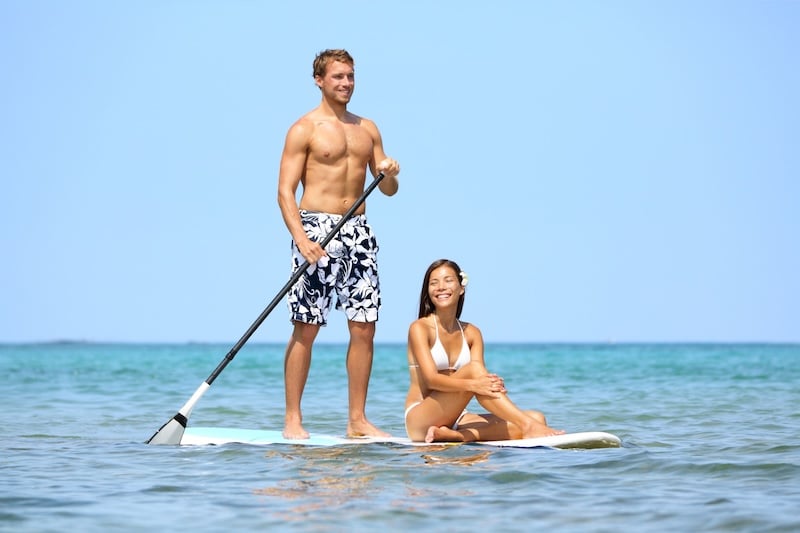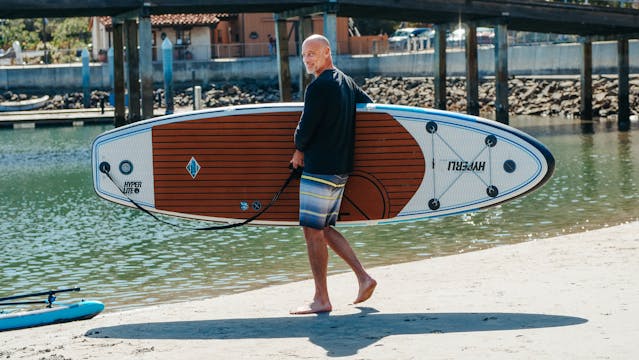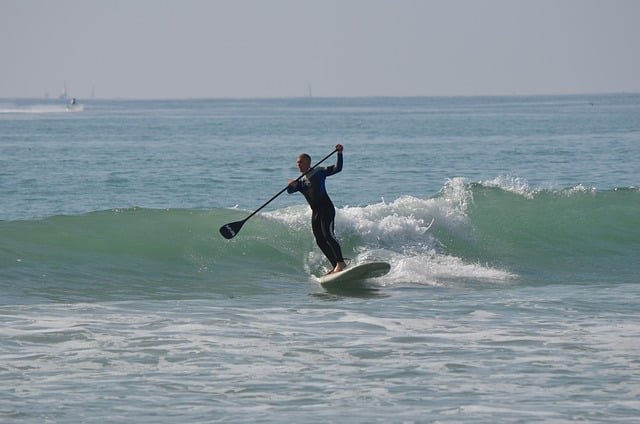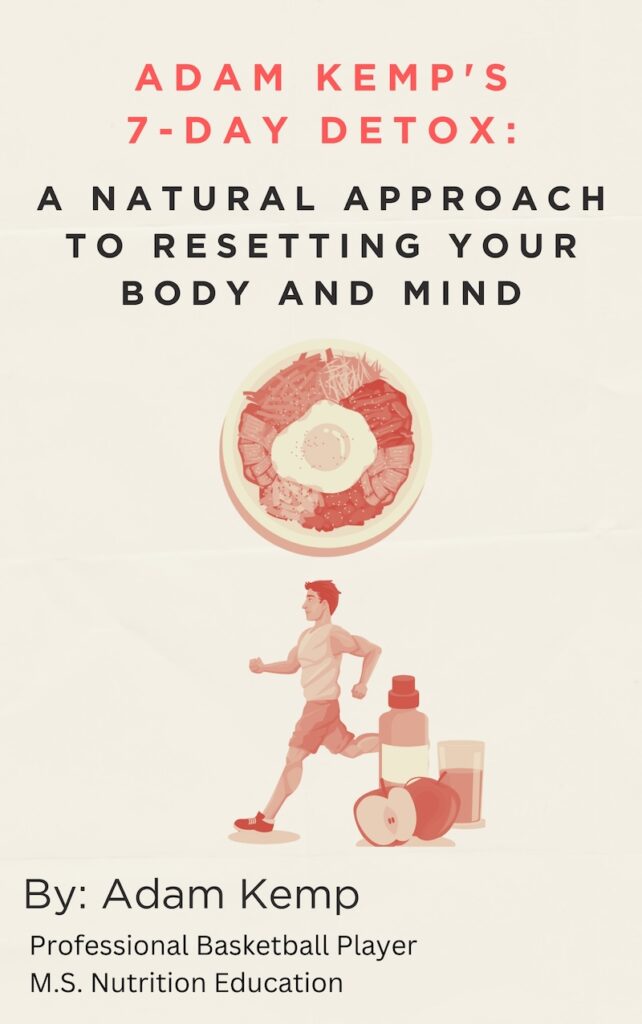Stand-up Paddleboarding Tips for Beginners
Stand-up paddleboarding (SUP) offers a full-body workout and a chance to explore the beauty of oceans, lakes, and rivers.
This water sport provides both physical exercise and a serene connection with nature, making it popular among outdoor enthusiasts.
However, understanding the basics and following safety guidelines are crucial for a fun and safe experience.
This article contains some essential stand-up paddleboarding tips for beginners to help you learn how to SUP, get started, and make the most of your stand-up paddleboarding adventures!
What is Stand-up Paddleboarding?

Stand-up paddleboarding (SUP) is a water sport that combines elements of surfing and kayaking, offering participants a unique way to explore lakes, rivers, and oceans while standing on a large, stable board and using a paddle to move.
Unlike traditional surfing, stand-up paddleboarding does not require waves.
This makes it more accessible to beginners, allowing people of all ages and fitness levels to enjoy calm waters while still getting a full-body workout.
Paddlers stand upright on the board, engaging their core, legs, and arms to maintain balance and propel themselves forward.
The origins of SUP can be traced back to Polynesian cultures, where people stood on wooden boards and used paddles to navigate coastal waters.
In recent decades, the sport has experienced a surge in popularity worldwide due to its versatility.
Some use it for leisure and exploration, others for fitness and endurance training, and many for specialized activities like SUP yoga, racing, or even fishing.
One of the key benefits of stand-up paddleboarding is its blend of physical exercise and mental relaxation.
It improves cardiovascular health, balance, and strength while also encouraging mindfulness and stress relief through time spent in nature.
For beginners, SUP offers a gentle introduction to water sports, and with the right equipment and safety practices, it quickly becomes a rewarding lifelong activity.
How to Start Stand-up Paddleboarding for Beginners

Getting started with stand-up paddleboarding doesn’t have to feel intimidating.
With the right equipment, basic techniques, and a focus on safety, beginners can quickly build confidence on the water.
Whether you’re looking for a new fitness activity, a way to connect with nature, or simply an enjoyable hobby, learning how to SUP step by step ensures a smooth and rewarding experience.
Learn All the Safety Measures
According to a review by the Orthopaedic Journal of Sports Medicine, stand-up paddleboarding is generally safe for children and adolescents if proper precautions are taken.
However, safety should always be a top concern when stand-up paddleboarding.
Therefore, it’s important to follow all local regulations and guidelines, wear a personal flotation device, and be aware of your surroundings at all times.
Another helpful tip is to let someone know your plans and expected return time in case of any emergencies.
Additionally, you should always wear a personal flotation device and consider using a leash to stay connected to your board.
Check weather conditions before heading out, and avoid areas with heavy boat traffic when you’re still learning.
Staying aware of your surroundings and respecting local guidelines ensures a safe and enjoyable SUP experience.
Choose the Right Location
Begin your SUP journey in calm, flat waters such as lakes, ponds, or sheltered bays.
These conditions provide stability and reduce the challenges that come with waves, currents, or strong winds.
A quiet environment helps you focus on learning balance, proper stance, and paddle control without added distractions.
Learn the Proper Stance
Stand near the center of your board with feet shoulder-width apart and knees slightly bent.
Keep your core engaged and your gaze forward, not at your feet, to maintain balance.
Practicing this athletic stance builds stability and makes paddling smoother as you gain confidence.
Master Basic Paddling Techniques
Hold the paddle with one hand on the top grip and the other halfway down the shaft.
Dip the blade fully into the water, then pull it back in a straight line to propel yourself forward.
Short, controlled strokes will give you better balance and efficiency than wide, sweeping motions.
Maintain and Clean Your Paddleboard
Proper maintenance of your stand-up paddleboard is essential to ensure that it is in good working condition and to prevent any problems from arising while you’re on the water.
- Regular Cleaning: It’s important to clean your board regularly to remove any dirt, debris, or saltwater residue that can accumulate over time. Use a mild detergent and a soft cloth or sponge to gently scrub the surface of your board, paying special attention to any crevices or hard-to-reach areas. Avoid using harsh chemicals or abrasive materials, as these can damage the surface of your board.
- Regular Inspections: Periodically inspecting your board for any damages, such as dents, cracks, or splits, is crucial to ensure it is safe. If you notice any issues, repair them immediately to avoid accidents. Small dents or scratches can usually be repaired with a soft rubber mallet, while more serious damages may require more extensive repairs or even replacement of the board.
- Proper Storage: Investing in a high-quality storage solution, such as a rack or cover, is a good idea to protect your board from the elements. This can help prevent damage caused by exposure to the sun, rain, or other environmental factors. Make sure to store your board in a cool, dry place, away from direct sunlight or extreme temperatures.
By following these maintenance tips for your stand-up paddleboard, you can keep it in top shape and ensure it’s always ready for your next water adventure.
How to Choose the Right Stand-up Paddle Board

Selecting the appropriate stand-up paddleboard is vital for both safety and enjoyment.
The right board will enhance your experience on the water and help you feel more confident as you learn.
Consider these factors:
Durability and sturdiness
Durability and sturdiness should be your top priorities when selecting a stand-up paddleboard.
Boards made of high-quality materials, such as epoxy or carbon fiber, are known for their strength and long-lasting performance.
These materials can withstand the rigors of frequent use and exposure to various water conditions.
Avoid cheaper, lower-quality materials, as they may not hold up over time and could break or deform, compromising your safety.
Size and Shape
Stand-up paddleboards come in various sizes and shapes, each suited for different activities and experience levels.
For beginners, wider and longer boards are generally more stable and easier to balance on, making them an excellent choice.
These boards provide a steady platform, helping you gain confidence as you learn to paddle.
On the other hand, narrower and shorter boards are typically faster and more agile, but they may be less stable, making them better suited for more experienced paddlers who are comfortable with advanced maneuvers.
Weight Capacity
It’s essential to choose a stand-up paddleboard that supports your weight and any additional gear you may be carrying.
Each board has a recommended weight capacity, which ensures optimal performance and stability.
Overloading a board can cause it to become unstable and increase the risk of accidents.
Make sure to check the weight capacity specifications before purchasing to ensure the board can accommodate you and your equipment comfortably.
Customer Reviews
Before making a purchase, take the time to read reviews from other customers.
Reviews can provide valuable insights into the pros and cons of different stand-up paddleboards, helping you make an informed decision.
Look for feedback on durability, stability, ease of use, and overall performance.
By considering the experiences of others, you can choose a board that meets your needs and preferences.
By carefully considering these factors and doing thorough research, you can select the right stand-up paddleboard for your skill level and intended use.
The right board will not only enhance your safety but also make your time on the water more enjoyable and fulfilling.
Benefits of Working with a SUP Trainer

Receiving proper training is essential for safe and enjoyable stand-up paddleboarding.
Although it may seem straightforward, mastering balance and technique is crucial to avoid accidents.
A qualified SUP trainer can teach you the basics, such as standing on the board, paddling efficiently, and turning. This guidance boosts confidence and ensures safety.
Overall, investing in professional training increases skills, safety, and overall paddleboarding experience.
Improve Technique and Efficiency
A trainer helps you develop proper paddling techniques, enhancing performance and reducing fatigue.
Personalized Instruction
An instructor provides customized feedback and adjusts training based on your progress, ensuring effective learning.
Health and Fitness Benefits
Research indicates that stand-up paddleboarding can provide a high-intensity, full-body workout that can improve muscle strength and endurance.
A trainer can tailor workouts to your fitness level, maximizing health benefits.
Final Thoughts: The Most Important SUP Boarding Tips for Beginners
Stand-up paddleboarding is one of the most accessible water sports, blending fitness, balance, and relaxation into a single activity.
For beginners, the key to success lies in choosing the right board, learning proper stance and paddling techniques, and always making safety a priority.
Starting in calm waters and investing time in practice will help you gain confidence and stability faster.
Maintaining your equipment and exploring options, such as a personal SUP trainer or group lessons, can also add variety and keep the experience exciting.
Most importantly, approach stand-up paddleboarding with patience and an open mind, as progress comes quickly when you focus on consistency.
By following these essential SUP tips, beginners can enjoy a safe, fun, and rewarding way to stay active on the water while building strength, endurance, and a sense of peace.
Read Next: How to Get Fit Without Going to the Gym
This website does not provide medical advice. This website site does contain affiliate links, and purchases may earn a commission.
Read my Medical Disclaimer, Review Disclaimer, and Publishing Policies for more details. Use of this site indicates acceptance of these terms.



